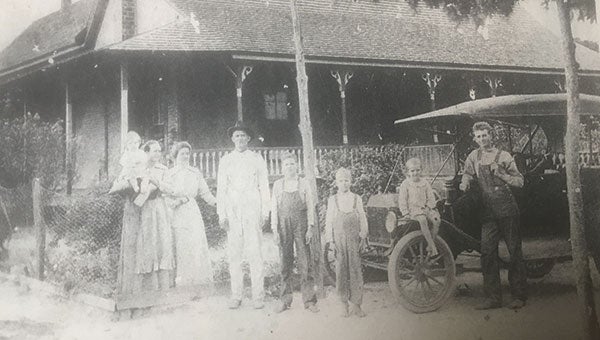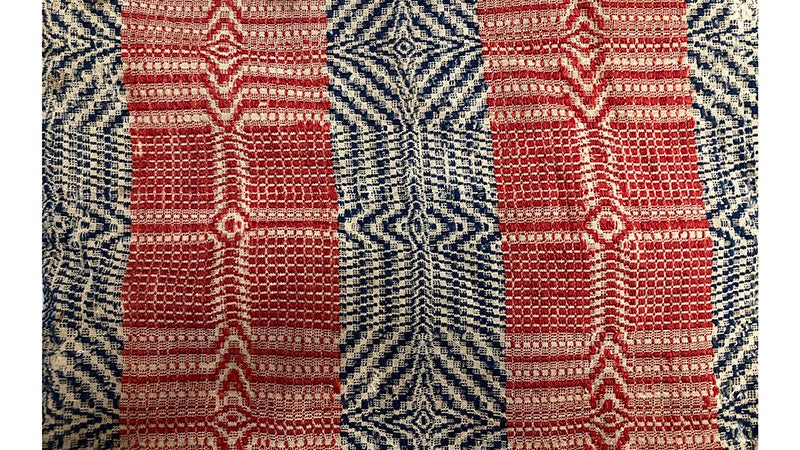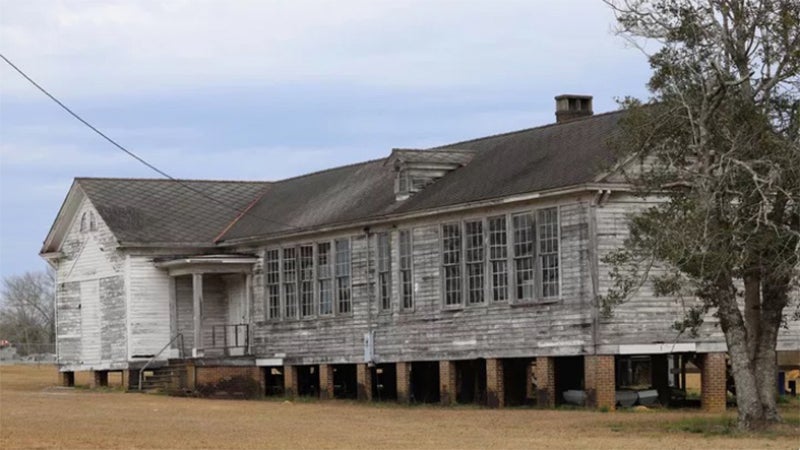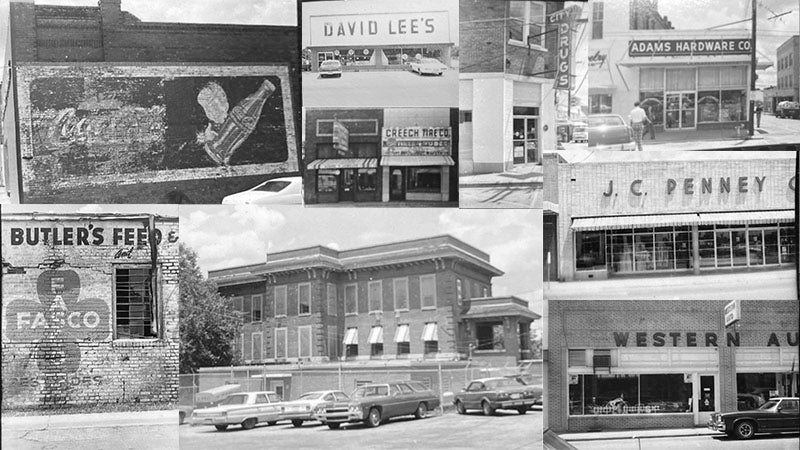Remember when: Recollection paints picture of 1800s homesteads
Published 3:11 am Saturday, June 1, 2019

- A typical farm family in Covington County. Courtesy Photo
I guess I never knew Mr. B. B. Padgett. The histories he wrote about the First Baptist Church are valuable stories of the church’s early beginnings. If he had not written down that information, we would not know today what we know about the history of FBC. Padgett was an employee of the U. S. Post Office in Andalusia, and he delivered mail around the city. He lived on Second Avenue. His roots go back to the Conecuh River Community and the old Three Notch Road.
His mother, Rachel, was the daughter of Battle and Margaret Mancil Parker who lived in the Roberts Community east of Brewton in Escambia County. His father was Reubin, son of Henry and Anna Diamond Padgett.
Hmmm……Reubin and Rachel! A song comes to mind that used to be sung in Friday assemblies at the East Three Notch School. Published in 1871 in Boston in a songbook, “Popular Songs of 19th Century America,” “Reuben and Rachel” went like this – Woman – “Reuben, Reuben, I’ve been thinking, what a good world this would be, If the men were all transported far beyond the Northern Sea.” Man – “Rachel, Rachel, I’ve been thinking, if we went beyond the sea, All the girls would follow after like a swarm of honey bees!” The boys and the girls would alternate singing with various verses! Those were the days! Just a “blast from the past!” Now back to the story!
Grandpa was the son of William and Elizabeth Padgett who moved from South Carolina to Covington County in about 1828. Grandma was the daughter of Reubin Diamond, Sr. who came from North Carolina. She was the granddaughter of Jeremiah Dixon who was a Revolutionary War soldier. The Dixons were among the early settlers in the Conecuh River Community.
Grandpa and Grandma were married in about 1846. They are both buried in the Conecuh River Church Cemetery.
Grandpa enlisted in the Confederate Army on June 1, 1864, and was sent to Virginia where he took part in several fierce battles, was captured at Petersburg, and finally arrived home in July 1865. He lived in the house he had previously built until his death in 1904. Padgett and his wife were married in 1910 and first resided in the old house of his grandparents.
The following account (edited somewhat) of an early Covington County home was written by B. B. Padgett when he was 90 years old. The home he is talking about was the old homestead of the 1800s that sat near the Conecuh River Baptist Church some 11 miles southwest of Andalusia. Padgett’s mother died when he was only three years old so he must have spent a lot of time at his grandparents’ home. This is his recollection of his grandmother’s house.
August 1978 – Old Home Folks Day Edition – The Opp News – “Visiting Grandmother’s House – The house sat far back and faced the road. It was surrounded by a large yard on which no grass was ever allowed to grow. It was kept scrupulously clean by being swept at intervals, usually once a week with a brush broom usually made from gall-berry switches. The house was made of heavy frame work which was fastened with wooden pins or pegs. The weather-boarding of siding as it was called was fastened with flat black iron nails.”
“The house consisted of a large main room with a wide fireplace at the east end and wide double beds in each of the two back corners. One of these beds was a tall four-poster where Grandma would put me to be at the foot of the bed. There were two smaller rooms on the back each with a double bed. One of these rooms was where my Aunt Martha sorted the mail when she was postmistress of the Conecuh River Alabama Post Office organized in 1879. My uncle Lige Padgett and my father Reubin Padgett served as postmasters in later years.”
“In the main living room, there was a great deal of living space, and it was here that Grandma carded the wool and spun the thread that she used in knitting socks and weaving cloth for making the family clothing. Grandpa had a home-made rocking chair with a piece of sheep skin for a cushion, fleece side up. As I sat on his lap while he rocked gently back and forth, we could hear the hoot owls call down by the river.”
“Near the fireplace stood something like a cabinet with a curtain before it. Many and sundry articles were stored there.
One was a small kerosene lamp with a small round wick. Candles were still being used to a great extent. Grandma would mold (or make) candles.”
“The kitchen was made of logs and was some twenty feet away from the main building. In the left front corner of the kitchen stood the loom where Grandma wove cloth for her children’s clothing and even bedspreads which were really works of art. In the far left corner the cupboard stood which took care of the utensils. One thing I remember to this day was the syrup pitcher.”
“The dining table was in the center of the room. On each side of the table was a bench made from slabs from a nearby sawmill. Holes had been bored in the underneath round side and pegs of sufficient length had been driven in as legs to support the benches.”
“At this time it was unlikely that Grandma had ever heard of a supermarket or a can opener. However, on that table she served many wholesome and tasteful dishes. She had no deep freeze so she did a lot of canning of vegetables and fruits – apples, peaches, and such. In her iron stove, sometimes she’d burn corn cobs for fuel. She still cooked sweet potatoes in ovens placed in the fireplace. They were um, um most delicious!”
“The house, except for the front, was surrounded by a large field where mostly corn and ‘pinders’ (peanuts) were grown. Little cotton was grown in the area at that time. On the east side of the yard was a long row of bee hives shaded by tall crepe myrtle bushes. I would watch my father rob (take honey) from the hives with bees swarming all about him. I preferred a little distance from the honey makers.”
“A pear tree near the front gate gave us much delicious fruit. The smoke house stood back on the north side of the yard. It was always filled with pickled meats in barrels as well as quantities of smoked hams, bacon, and sausage. I remember helping Grandma stuff sausage. If laid end to end, it was enough to cover the entire L & N Railroad at that time at least.”
“The ‘Plunder House’ stood in the northeast corner of the yard. It had all the plunder that had accumulated during the years past. I didn’t realize the value of such things then, but now, I’d give almost anything for some of the items that were stored there like the old canteen that Grandpa used while serving in the Civil War. That would be priceless today!”
“The garden was located back of the kitchen. Many of the vegetables Grandma had were grown there. There were peach trees and a large walnut tree. I remember cracking many of them and using a hair pin to remove the meat from the hull. A little salt added to the flavor.”
“There was an ‘ash hopper’ just inside the garden gate. Grandma would save all the ashes, put them in the ‘hopper,’ pour water over them, and use the drainage as lye in making soap.”
“Mulberry trees were on the east, west, and north sides of the back yard in the fields. Under one of those was the chicken house. Chickens roosted there at night. The guineas roosted most any place and ‘cackled’ all night.”
“There were some apple trees in the edge of the field. I remember well the funeral of one of Grandma’s favorite hens that took place under one of these old trees. The hen probably died of natural causes, but when the earth had been well trampled down over the deceased, Grandma intoned ‘Ashes to ashes, dust to dust!’”
“The sugar cane mill was located some distances from the house adjoining the mule lot. I can visualize the mule or perhaps a horse going round and round turning the mill to crush stalks of cane to extract the juice for boiling into syrup. The vat or cooking pan was nearby. After the sugar cane mill had been abandoned in later years, Grandma used this plot for gardening.”
“Two stalls were built for keeping the mules with a back space room for parking the buggy. Grandpa bought them from a Mr. Chapman who lived at the corner of the present East Three Notch Street and Second Avenue (where Scott Wright lives today). The mules were named Jack and Dianah. I don’t remember what happened to them, but they probably served their time and passed on to a better land for mules!”
“The well, oh yes, the well! It was located far out front between the main road and the circular drive. I remember on one occasion this well had caved in and to a great extent was filled with sand. This well was abandoned, and a new one was dug. At the edge of the porch on a shelf were water buckets and wash pans. A bench on the porch against the wall was where Grandpa sat during the good weather in the summertime resting and killing flies with a home-made fly swatter.”
This account of early South Alabama paints a good picture of rural life on the farm. Thanks to Mr. B. B. Padgett who definitely had a calling for writing stories. Correct me if I am wrong, old timers. One of the stories we often tell at the Three Notch Museum is about Mr. Padgett. During World War II he waved goodbye to his son Lindsey boarding the train there at the Central of Georgia Depot. Lindsey who had been a popular student at the Andalusia High School sadly returned by way of the railroad but this time not as a passenger but in a casket. His name is on a plaque hanging in the front lobby of AHS among the names of other students who served in the early to mid 1940s and of students who were killed in the war. Those names of the deceased listed on the plaque have a star beside them. In paying tribute to all those whom we memorialize each Memorial Day, we Remember When they were a part of life in Covington County, and we salute them by preserving their history.
Sue Bass Wilson, AHS Class of 1965, is a local real estate broker and long-time member of the Covington Historical Society. She can be reached at suebwilson47@gmail.com.





